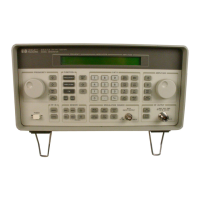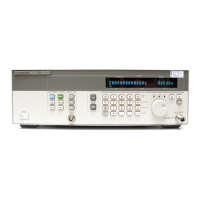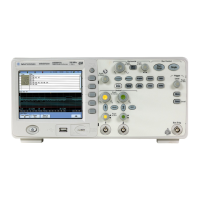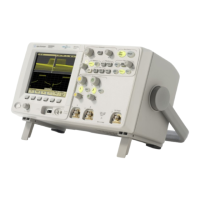196
S:\Hp8960\E1962B CDMA 2000\Pi Release\Reference Guide\Chapters\cdma2000_gen_bse_rcvr_test.fm
Receiver Control
Automatic Receiver Control
Expected Power
To make accurate measurements, the test set needs to know how much power to expect at the test set’s RF
IN/OUT port; referred to as the Expected Power. It gets this value from the call control MS TX Level setting
during automatic receiver control, or by the user specifying the expected power with the receiver power control
set to manual.
You can set the expected power level beyond the capability of the test set’s hardware because expected power is
intended to reflect the potential range of RF power at the DUT. This range of RF power is meant to
accommodate the use of a gain or loss network between the DUT and the test set. See “Setting Up Amplitude
Offsets and Frequency Points” on page 81 for details about amplitude offset.
The upper and lower limits of expected power provide boundaries for the combination of amplitude offset and
expected power. If you set expected power to +52 dBm and the amplitude offset to
−3 dB, the calculated
receiver power will be 49 dBm, but the test set shall be set to +43 dBm, the upper limit of the hardware. If the
calculated value of receiver power goes below
−25 dB, the lower limit of the hardware, the test set shall be set
to
−25 dB.
Cellular Band (800 MHz) Mobile Power Class Considerations for Expected Input Level
The nominal power output for power settings 0, 1, 8, 9, and 10 are different for power class 1 and power class 4
mobiles when operating in the cellular (800 MHz) band, and affect the expected input level. (Power levels 0 to
7 are used for analog and digital signals, but power levels 8, 9, and 10 are only used for digital signals.
When the MS TX Level is set to power level 0 or power level 1, the test set assumes you are testing a power
class 1 mobile and sets the expected input level accordingly. If you are testing a power class 4 mobile and have
the MS TX Level set to 0 or 1, the test set will likely display an under range condition when making a
measurement, indicating that the signal being measured is well below the expected input level. This is
because power levels 0 and 1 = 4W (36 dBm) for a power class 1 mobile, but only 0.6W (about 28 dBm) for a
class 4 mobile.
When the MS TX Level is set to power level 8, 9, or 10, the test set assumes you are testing a power class 4
mobile and sets the expected input level accordingly. If you are testing a power class 1 mobile, the test set may
display an over range condition when making a measurement, indicating that the signal being measured is
well above the expected level. This is because power levels 8, 9, and 10 are about 5 dB higher for a power class
1 mobile than for a class 4 mobile.
If an under range or over range condition occurs during a measurement due to a power class difference, use
manual receiver control to set the correct expected level. See “Expected Power” on page 196.
Effects on Receiver Control When Changing Operating Mode
After selecting the operating mode and setting one or more receiver controls to manual, the receiver control
settings remain as you set them until you change operating mode. Changing operating mode causes some or
all receiver parameters to return to automatic control.
Related Topics
“RFANalyzer”

